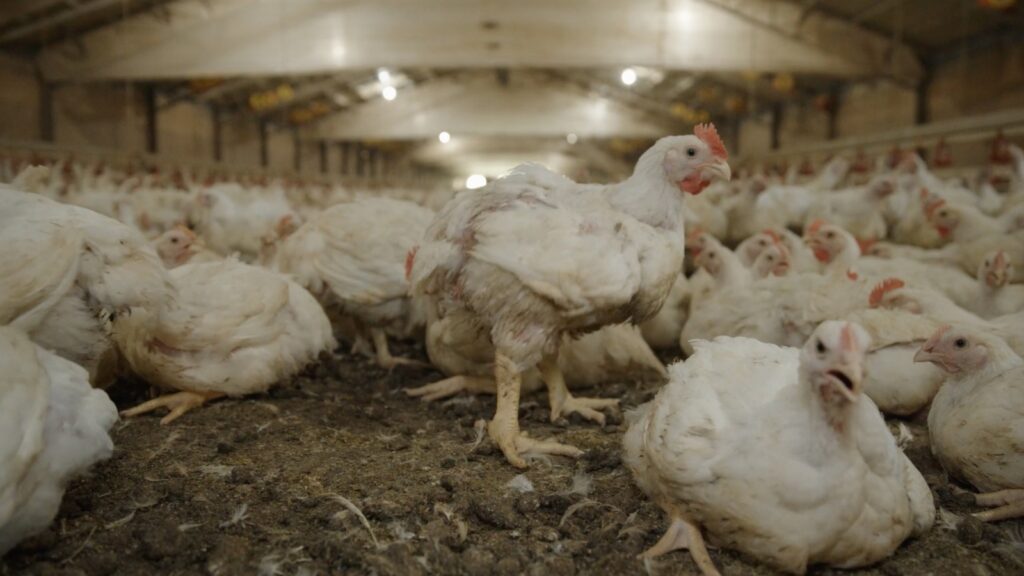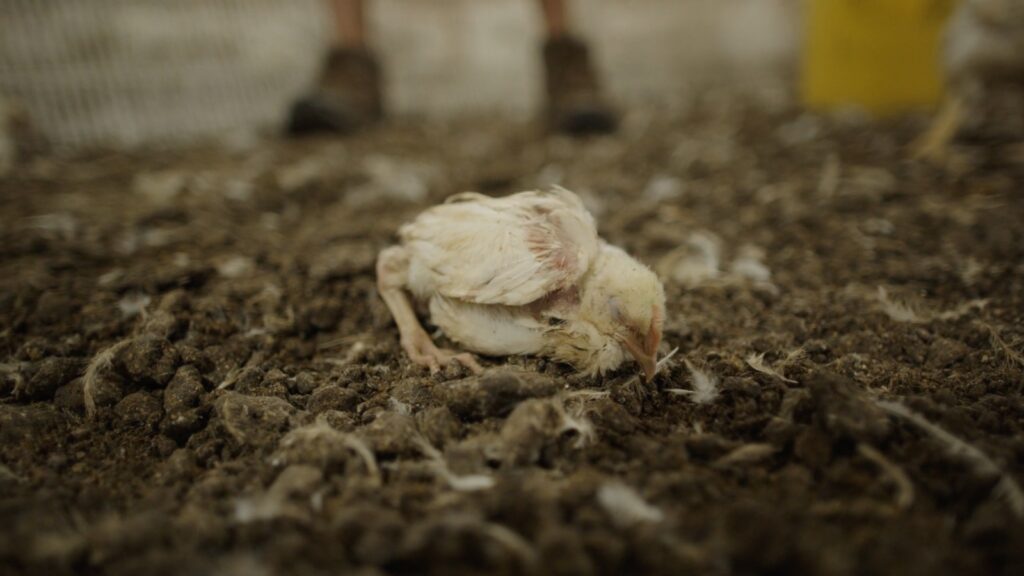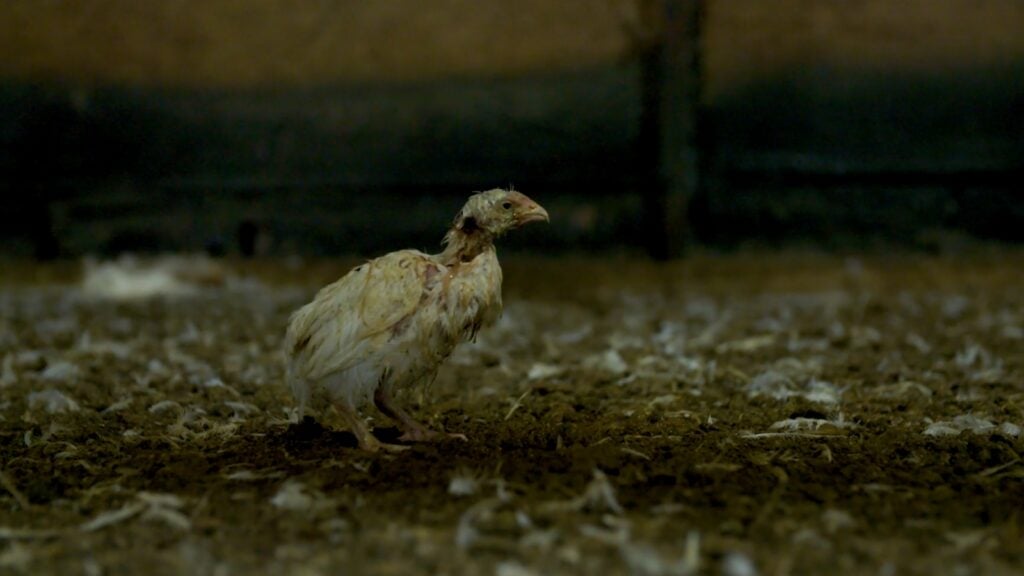The New York Times video was shot by nonprofit group Mercy for Animals and takes viewers behind the industry’s closed doors — the inside of an industrial chicken farm.
The footage shows immense suffering. Over the past 50 years, chickens have been bred to be bigger and bigger, exposing many to injury, heart attacks, disease, and death.
Inside the factory, Leah Garcés, president of Mercy for Animals, describes the scene as similar to a “nuclear waste site.” There, she is hit by a “wall of ammonia” from the “sea of white” chickens.
There are tens of thousands of birds defecating on the ground and the ammonia, which causes the strong smell, also causes burns to the chicken’s chests and pads of their feet.
Widespread animal welfare issues
Although the unique footage was recorded on one US farm, Mercy for Animals reveals that issues with chicken welfare are widespread.
“The cruelty that we documented isn’t a matter of one farm failing to meet industry standards,” said Garcés.
She continued to explain that, “current standards allow for the blatant animal suffering seen in the video. Yet consumers have made it clear that they care about animal welfare.”
In the hard-hitting video, Garcés shares that 4,000 birds died on the farm in a six-week period from dehydration, heart attacks, and disease before they even reached the slaughterhouse.
“There’s no excuse for these practices,” she added.
This comes after Animal advocacy organization Open Cages investigated Cuttings Farm and Silver Drift Farm in the UK last year and found “prolonged suffering.”

Welfare demands
Mercy For Animals is launching a new campaign called “The Life of Chickens” to expose the chicken industry’s widespread abuse to consumers and demand action from retailers.
It’s demanding that retailers, the largest purchasers of chicken in the country, sign up to the Better Chicken Commitment and treat animals with basic decency.
So far 200 companies in North America have adopted standards aligned with the commitment, but only six of them are supermarkets.
The recommended welfare practices include giving birds more room to move, providing environmental enrichments, and using a multi-step controlled-atmosphere processing system.

A retailer report
Mercy for Animals also released its first retailer report in late 2021.
This report is available for anyone to read and ranks companies according to their efforts to address the most pressing welfare issues for chickens raised for meat.
Among those listed as lagging behind are ALDI, Walmart, Trader Joe’s, and Target, due to their inaction in addressing the welfare issues.
Mercy For Animals is a leading international nonprofit working to end the exploitation of animals for food and construct a compassionate food system. MercyForAnimals.org.






